As an Amazon Associate, I earn from qualifying purchases.
Page Contents
ToggleIntroduction
Trash bags are an essential part of our daily lives, but have you ever stopped to think about how important it is to choose the right one? In this comprehensive article, we will delve deep into the world of garbage bags and provide all the answers you need. From understanding different types of garbage bags to selecting the right size, handling odor issues, and exploring eco-friendly options, we have got you covered. So, let’s dive in and discover everything you need to know about garbage bags!
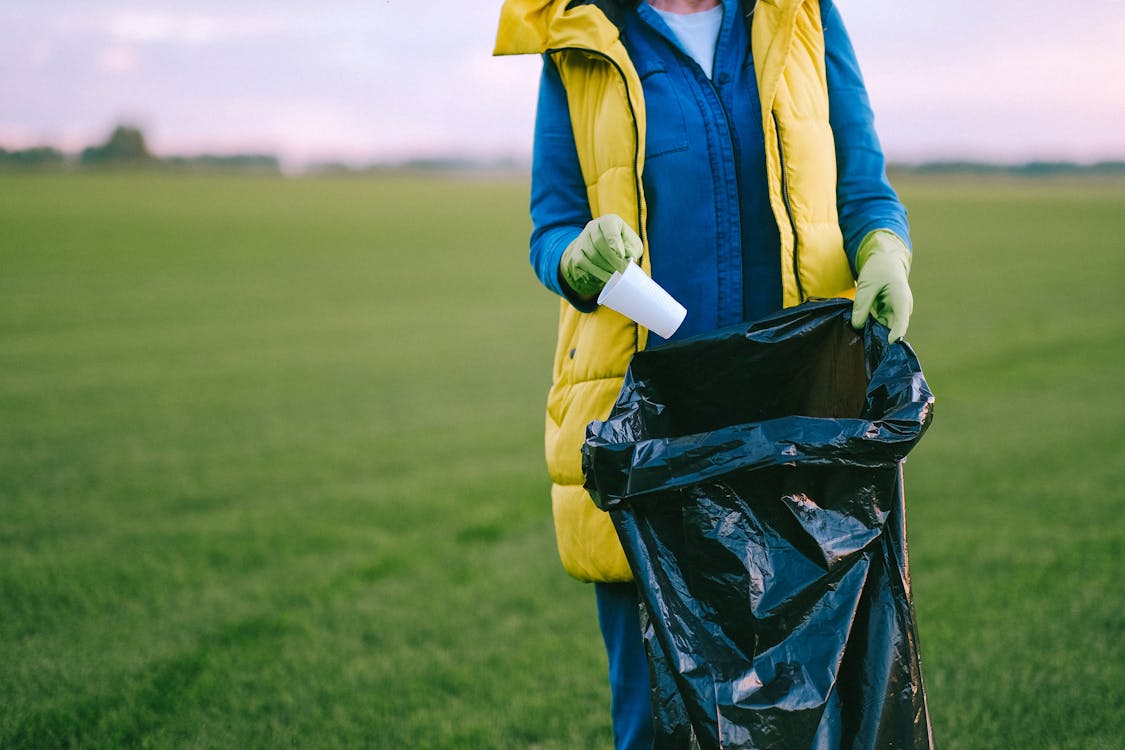
Types of Garbage Bags
Kitchen Trash Bags
When it comes to kitchen trash bags, size and capacity matter. It’s essential to choose a bag that fits perfectly in your kitchen bin while accommodating your household’s waste volume. Kitchen trash bags come in various sizes and capacities, ranging from small 4-gallon bags to large 30-gallon bags.
In addition to size, the material of the bag is also crucial. Plastic bags are commonly used for their durability and affordability. However, if you are looking for more environmentally friendly options, you can consider biodegradable or compostable bags. These alternatives are made from plant-based materials and break down naturally over time.
To make dealing with kitchen waste easier, many garbage bag manufacturers have introduced innovative features. Some bags come with drawstring closures for easy tying and carrying, while others have built-in odor-neutralizing technologies to keep your kitchen smelling fresh.
Outdoor Garbage Bags
Outdoor garbage bags are designed to withstand the elements and handle heavy-duty waste. They are commonly used for disposing of yard waste, construction debris, or larger household items. When choosing an outdoor garbage bag, consider whether you need a heavy-duty bag for more substantial loads or a regular bag for lighter waste.
Weather-resistant options are also available for outdoor use. These bags are made from durable materials that can withstand rain, snow, and harsh sunlight. The last thing you want is for your bag to tear or leak when exposed to the elements.
Furthermore, for those concerned about odors emanating from outdoor garbage, certain bags have odor-control technologies incorporated into them. These bags contain additives that neutralize unpleasant smells, making them a great choice for outdoor use.
Car Garbage Bags
Car garbage bags are a game-changer for maintaining cleanliness on the go. These bags are specifically designed to fit in the car, making it easy to dispose of trash while driving. They come in different sizes and are generally compact enough to fit in the backseat pockets or hang from the headrest.
Installation is a breeze, with options ranging from adhesive strips to hooks that can be attached to the car. Some car garbage bags have additional features like leak-resistant liners or disposable liners for easy clean-up.
Handling odor in the car can be a challenge, especially during long trips or after a particularly messy snack. Luckily, car garbage bags often come equipped with odor-blocking technologies or scented liners to ensure your car smells fresh even with trash inside.
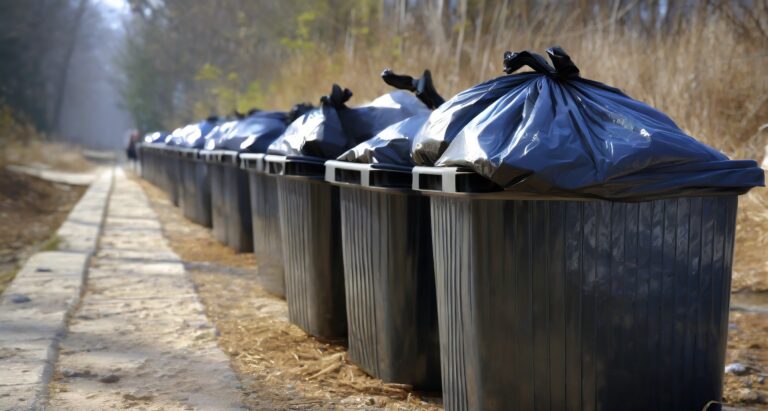
Selecting the Right Size
Matching Bag Size to Bin Size
Selecting the right size of the garbage bag is crucial to ensure it fits snugly in your bin. Picking a bag that is too small may result in overflow and mess, while a bag that is too large may waste space and resources.
Measure the dimensions of your bin, taking into account its shape and any protruding handles or levers. Once you have the measurements, choose a garbage bag that fits the dimensions closely. It’s better to opt for a slightly larger bag than a smaller one to avoid any spillage.
Considerations for Different Rooms
Different rooms in your house may require different sizes of garbage bags. For instance, the bathroom may only need a small bag due to the limited waste volume, while the kitchen might require a larger bag to accommodate food scraps and packaging waste.
Consider the waste volume and the frequency of disposal in each room to determine the bag size needed. It’s always helpful to keep a variety of bag sizes on hand to accommodate the needs of each room.
Tips for Efficient Space Utilization
Maximizing space utilization is not just about selecting the right size but also using the bag efficiently. Once you have placed the bag in the bin, ensure that it is spread evenly, allowing for optimal use of available space. Avoid folding or crumpling the bag as it may weaken the material and reduce its carrying capacity.
Additionally, consider compressing bulky waste before disposing of it to create more room in the bag. This will help you maximize the bag’s capacity and reduce the number of bags required for disposal.
Understanding Bag Thickness
Mil Measurement Explained
The thickness of a garbage bag is typically measured in mils, which is equivalent to one-thousandth of an inch. The mil measurement indicates the bag’s strength and durability.
A higher mil measurement signifies a thicker and more resilient bag. For heavy-duty use or sharp objects, a higher mil bag is recommended, as it will be less prone to tearing or puncturing. On the other hand, regular household waste can be adequately handled by bags with lower mil measurements.
Impact on Durability
The bag’s thickness directly impacts its durability. Thicker bags are less likely to tear, allowing you to confidently dispose of heavier or bulkier waste without worrying about leaks or spills. They are especially essential for outdoor use, where the bag needs to withstand rough handling and exposure to irregular-shaped waste.
Regular-thickness bags, while not as durable as their heavy-duty counterparts are still suitable for everyday use. They provide ample strength to handle typical household waste without any issues.
Choosing the Appropriate Thickness for Your Needs
When selecting the appropriate thickness for your needs, consider the types of waste you typically dispose of. If you frequently deal with sharp objects, heavy items, or outdoor waste, it’s wise to opt for a higher mil bag for added durability and peace of mind.
For everyday household waste, a regular-thickness bag will suffice. However, always check the bag’s weight-bearing capacity to ensure it can handle the weight and volume of your trash without the risk of tearing.

Eco-Friendly Options
Biodegradable vs. Compostable
As environmental concerns grow, so does the demand for eco-friendly garbage bags. Two popular options in this regard are biodegradable and compostable bags.
Biodegradable bags are designed to break down naturally over time when exposed to particular conditions. They decompose into smaller pieces and eventually blend back into the environment. Compostable bags, on the other hand, are specifically engineered to break down into nutrient-rich compost when processed in a composting facility.
Both biodegradable and compostable bags offer advantages over conventional plastic bags, as they reduce the environmental impact of waste disposal. However, it’s crucial to check the specific certifications and guidelines provided by the manufacturer to ensure these bags meet the necessary standards.
Environmental Impact of Conventional Bags
Conventional plastic bags have a significant environmental impact due to their slow decomposition rate. It can take hundreds of years for a single plastic bag to break down, leading to pollution and harm to ecosystems.
Moreover, the production of conventional plastic bags contributes to the depletion of natural resources and emits harmful greenhouse gases. As consumers become more aware of these issues, the demand for eco-friendly alternatives continues to rise.
Sustainable Alternatives
In addition to biodegradable and compostable options, there are other sustainable alternatives available on the market. Some manufacturers use recycled materials to produce garbage bags, reducing the need for virgin materials and minimizing waste.
Furthermore, some companies are exploring innovative materials like plant-based plastics or bioplastics, which have a lower carbon footprint compared to conventional plastic. These advancements in sustainable materials offer promising alternatives to traditional garbage bags.
Dealing with Odor Issues
Odor-Neutralizing Technologies
Odor is a common issue associated with garbage bags, especially in warm climates or with certain types of waste. To combat this problem, many garbage bag manufacturers have developed odor-neutralizing technologies.
Some bags are infused with odor-neutralizing additives that trap and neutralize unpleasant smells. These additives work by capturing odor molecules and preventing them from escaping the bag. This innovation ensures that your home remains odor-free, even when dealing with particularly pungent waste.
DIY Odor Control Methods
If you prefer a more hands-on approach to odor control, there are several DIY methods you can try. Natural remedies like adding baking soda or activated charcoal to the bag can help absorb unpleasant odors.
Alternatively, you can place scented dryer sheets or cotton balls with a few drops of essential oil at the bottom of the bag to create a fresh-smelling environment. These simple and cost-effective solutions can make a noticeable difference in odor control.
Tips for Eliminating Persistent Odors
Persistent odors can be challenging to eliminate, but with the right techniques, it’s possible to restore freshness. Regularly cleaning and disinfecting your garbage bin can help prevent lingering smells from transferring to the bag.
Additionally, ensure that your garbage bags are securely tied to prevent any air circulation that could spread odor. If the smell persists, consider placing an odor-absorbing product like activated charcoal near the trash area to neutralize any lingering odors.
Strength and Durability
Factors Affecting Bag Strength
The strength and durability of a garbage bag depend on various factors. The material of the bag plays a significant role, with stronger materials like high-density polyethylene (HDPE) offering better resistance to tearing or puncturing.
The bag’s construction, such as reinforced seams or reinforced handles, can also contribute to its overall strength. Additionally, the bag’s weight-bearing capacity, usually specified by the manufacturer, indicates the maximum load it can safely handle.

Handling Heavy Loads
When dealing with heavy loads, it’s crucial to select a garbage bag with sufficient strength. Heavy-duty bags, which are reinforced to withstand heavier waste, are designed for this purpose.
To ensure the bag can handle the weight, it’s essential to distribute the load evenly. Avoid overstuffing the bag or overloading it with sharp objects that could potentially puncture the bag. If needed, consider using additional bags for extra reinforcement or double-bagging to prevent any spillage or accidents.
Tear-Resistant Materials
Tearing is one of the common issues faced with garbage bags, especially when handling irregular or sharp-edged waste. Opting for bags made from tear-resistant materials can significantly reduce the risk of tears or rips.
Certain garbage bags are made from reinforced materials like low-density polyethylene (LDPE) or polypropylene (PP), which provide enhanced tear resistance. These materials are more pliable and less prone to tearing, allowing you to dispose of waste without worrying about bag failure.
Cost Considerations
Balancing Quality and Price
When it comes to garbage bags, striking a balance between quality and price is essential. While it may be tempting to opt for the cheapest option, it’s important to consider the bag’s durability and functionality.
Investing in higher-quality garbage bags may cost a bit more upfront, but they are less likely to fail or require double-bagging. Additionally, they offer peace of mind, ensuring that your waste is securely contained without any risk of leakage or spills. Ultimately, it’s crucial to assess your needs and budget to find the sweet spot between quality and affordability.
Bulk Buying Benefits
Bulk buying can often be a cost-effective option when it comes to garbage bags. Many retailers offer discounted prices for larger quantities, allowing you to stock up and save money in the long run.
By purchasing in bulk, you not only save on the cost per bag but also reduce packaging waste over time. Just ensure that you have sufficient storage space to accommodate the extra bags.
Long-Term Cost-Effectiveness
Considering the long-term cost-effectiveness of garbage bags is vital. While eco-friendly or premium bags may have a slightly higher price tag initially, they can offer long-term savings by reducing the frequency of bag changes or addressing specific needs like odor control.
Moreover, sustainable alternatives can contribute to overall waste reduction and minimize environmental impact. By opting for high-quality, durable garbage bags, you can minimize waste, save money, and make a positive impact on the environment.
Proper Disposal Techniques
Environmental Impact of Improper Disposal
Improper disposal of garbage bags poses significant environmental threats. When disposed of incorrectly, plastic bags can end up in landfills or pollute water bodies, causing harm to wildlife, marine ecosystems, and soil quality. These bags take hundreds of years to decompose, contributing to the world’s growing waste crisis.
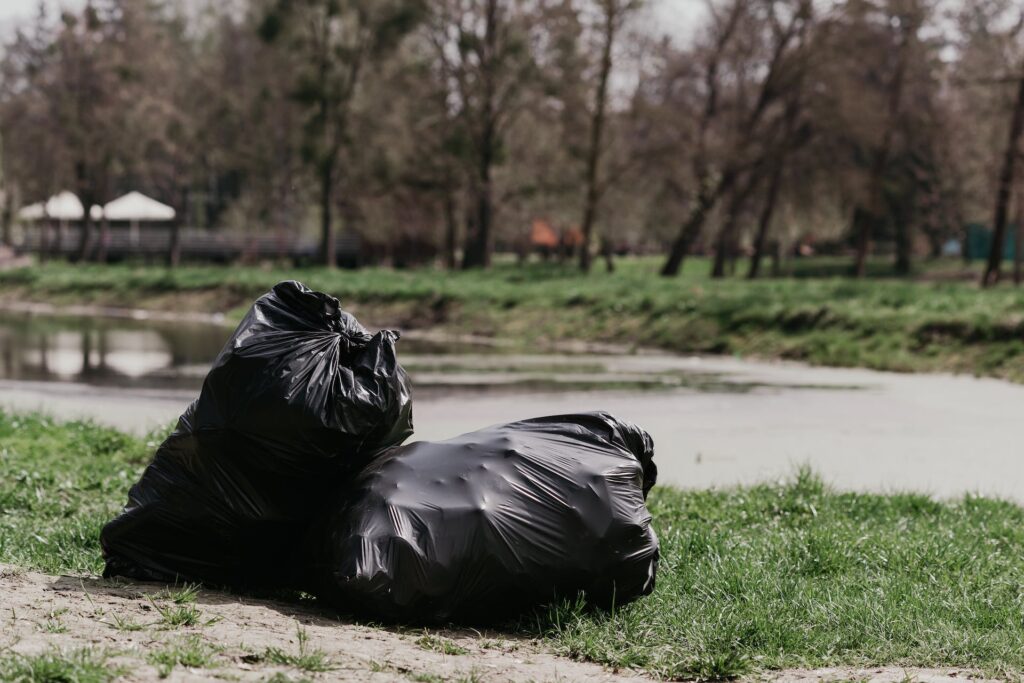
Additionally, plastic bags that are incinerated release toxic pollutants into the air, further escalating environmental issues. It’s crucial to be mindful of the proper disposal techniques to minimize the negative impact on the environment.
Guidelines for Safe Disposal
To ensure safe and responsible garbage bag disposal, follow these guidelines:
First, check with your local waste management facility to determine if they accept plastic bags for recycling. Some locations have dedicated drop-off points for recycling plastic bags.
If recycling is not an option, tie the bag securely and place it in your regular trash bin. Avoid littering or disposing of bags in public spaces.
Consider reusing or upcycling the bag if possible. Plastic bags can be used for pet waste disposal, storing items, or even crafting projects.
Educate yourself about any local regulations or guidelines for garbage bag disposal to ensure compliance with environmental standards.
Recycling and Upcycling Opportunities
Recycling options for plastic bags have been expanding in recent years. Many grocery stores now have collection bins where you can drop off your used bags for recycling. These bags can be transformed into new plastic products, reducing the demand for virgin materials.
Additionally, you can explore creative ways to upcycle your garbage bags. From crafting reusable shopping bags to making rain ponchos or even creating artwork, there are numerous possibilities to give your old bags a new purpose.
Innovations in Garbage Bag Technology
The world of garbage bags has come a long way from the flimsy plastic bags we used to use. Thanks to advancements in technology, we now have access to smart garbage bags that are revolutionizing waste management. These bags are not only more durable and efficient but also offer a range of user-friendly features that make our lives easier.
Smart Garbage Bags
Smart garbage bags are the future of waste management. These innovative bags come equipped with sensors that can detect the level of garbage inside, allowing you to monitor and manage your waste more effectively. Using a smartphone app, you can receive real-time notifications about when it’s time to take out the trash, reducing the chances of overflow or unpleasant odors. Additionally, some smart garbage bags even have built-in odor-absorbing technology, ensuring your home remains fresh and clean.
Future Trends and Developments
The future of garbage bag technology looks promising. Researchers and developers are constantly working on new ways to enhance the functionality of these essential household items. Some of the trends we can expect to see shortly include compostable garbage bags made from biodegradable materials to reduce environmental impact. We may also witness the integration of artificial intelligence into garbage bags, allowing them to analyze waste composition and provide personalized recycling recommendations.
User-Friendly Features
Gone are the days of struggling with flimsy garbage bags that tear at the slightest touch. Modern garbage bags are designed with user convenience in mind. Many brands now offer easy-to-tie drawstring closures, eliminating the need for knots or clips. Some bags also come with reinforced bottoms to prevent leaks, making clean-up a breeze. Manufacturers are even experimenting with scented garbage bags, adding a pleasant aroma to your trash disposal routine.
Customer Reviews and Recommendations
When it comes to choosing the right garbage bags, nothing beats hearing from customers who have firsthand experience. Real-life experiences shared by consumers can provide valuable insights into the quality, durability, and effectiveness of various brands and products.
Real-Life Experiences
Reading customer reviews can help you navigate through the sea of options available in the market. Customers often share their satisfaction or dissatisfaction with the product, shedding light on its strengths and weaknesses. Pay attention to reviews that highlight the bags’ durability, tear resistance, and odor control capabilities. These firsthand accounts can help you choose a garbage bag that meets your specific needs.
Popular Brands and Products
Some garbage bag brands have earned a reputation for their quality and reliability. Look out for popular brands that consistently receive positive reviews from customers. These brands often invest in research and development, ensuring their products deliver excellent performance. Pay attention to features like thickness, capacity, and ease of use when considering different options. Among the most highly recommended brands are Glad, Hefty, and Simplehuman.
Common Complaints and Solutions
In addition to positive experiences, it’s essential to be aware of common complaints raised by customers. This knowledge will help you avoid potential pitfalls and make an informed decision. Pay attention to reviews that mention issues such as weak seams, poor scent retention, or difficulty in tying the bags. If you come across such complaints, consider looking for alternative brands or products that address these concerns.

Case Studies
While customer reviews provide valuable insights, case studies offer a broader perspective on waste management initiatives and the impact of garbage bag usage. Examining successful case studies can inspire communities and individuals to embrace sustainable practices and responsible waste disposal.
Successful Waste Management Initiatives
Case studies focusing on successful waste management initiatives can serve as a guide for communities looking to implement effective waste disposal systems. These studies often highlight the strategies and technologies used to reduce waste generation and encourage recycling. From promoting composting to implementing efficient sorting and recycling programs, these initiatives showcase the positive impact of responsible waste management.
Communities Embracing Sustainable Practices
Communities around the world are taking matters into their own hands, embracing sustainable practices to reduce their ecological footprint. These case studies showcase how individuals and communities have successfully implemented waste reduction programs, including the use of eco-friendly garbage bags. By learning from their experiences and challenges, other communities can adopt similar practices and work towards a greener future.
Lessons Learned from Case Studies
Case studies offer valuable lessons and insights into waste management practices that have proven successful. By analyzing these case studies, individuals and communities can understand the importance of waste reduction, recycling, and responsible disposal. These lessons can guide the development of local policies, encourage collaboration, and inspire individuals to adopt sustainable practices in their daily lives.
Best Practices for Storage
Properly storing garbage bags is crucial for ensuring their effectiveness and durability. By following a few simple guidelines, you can maximize their shelf life and avoid damages that could compromise their functionality.
Proper Storage Conditions
To prevent damage and maintain their quality, store garbage bags in a cool, dry place away from direct sunlight. Extreme temperatures can weaken the bags and make them more prone to tearing. It’s best to keep them in a cabinet or closet, protecting them from exposure to excessive heat or cold.
Avoiding Damages During Storage
When storing garbage bags, it’s essential to avoid placing heavy objects on top of them. The weight can cause deformations and weaken the bags, making them more susceptible to tearing. Additionally, ensure they are not stored near sharp objects or chemicals that could puncture or damage the bags.
Maximizing Shelf Life
To maximize the shelf life of your garbage bags, consider purchasing them in bulk. Many brands offer larger quantities at discounted prices, allowing you to stock up and reduce the frequency of purchases. Always check the expiration date on the packaging to ensure you are using fresh and intact bags.
Emergency Situations and Cleanup
Accidents happen, and knowing how to handle spills and quick cleanup is essential. By following a few simple tips and having the right supplies on hand, you can effectively manage emergencies without stress.
Tips for Handling Spills and Accidents
In the unfortunate event of a spill or accident, act quickly to minimize the damage. Use absorbent materials like paper towels or cat litter to soak up liquids and prevent them from spreading. Remember, it’s important to wear protective gloves to avoid direct contact with potentially harmful substances.
Emergency Cleanup Supplies
Having a well-stocked emergency cleanup kit can save you time and frustration. Some essential supplies include absorbent pads or towels, disinfectant wipes, gloves, and garbage bags specifically designed for hazardous waste disposal. Keeping these supplies in a designated area allows for prompt action in case of emergencies.
Quick Solutions for Unexpected Issues
Unexpected issues like a broken bag or a leak can occur when we least expect them. In such cases, having quick solutions can make all the difference. Keep a roll of duct tape or a pack of zip ties handy for temporary fixes. These quick solutions can help contain the mess and prevent further complications until a proper replacement or cleanup can be arranged.
Industry Standards and Regulations
Garbage bags must meet certain standards and regulations to ensure safety, quality, and compliance with environmental standards. Understanding these requirements will help you make informed choices and select brands that prioritize sustainability.
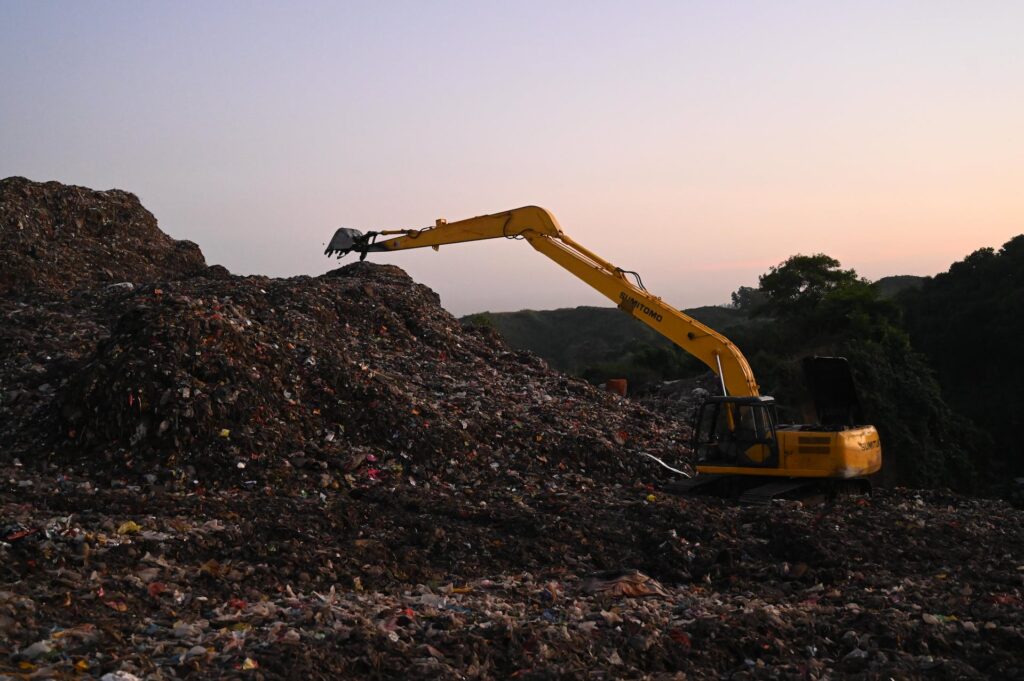
Regulatory Requirements for Garbage Bags
Different countries and jurisdictions may have specific regulations in place regarding the manufacturing and labeling of garbage bags. These regulations often state requirements regarding material composition, thickness, and capacity. Familiarizing yourself with these requirements will help you choose garbage bags that adhere to safety standards and provide reliable performance.
Compliance with Environmental Standards
As environmental concerns continue to grow, many manufacturers are striving to produce environmentally friendly garbage bags. Look for products that are certified as compostable or made from recycled materials. These certifications indicate that the bags meet stringent environmental standards and are a more sustainable choice.
Ensuring Safety and Quality
Garbage bag manufacturers often subject their products to rigorous testing to ensure safety and quality. Look for brands that prioritize quality control and adhere to international standards. These brands invest in research and development, ensuring their products are durable, puncture-resistant, and odor-blocking. Reading product labels and searching for certifications can help you choose garbage bags that are reliable and of high quality.
Choosing the Right Brand
With the numerous options available in the market, choosing the right garbage bag brand can be overwhelming. To make an informed decision, consider factors such as reputation, reliability, and quality standards.
Reputation and Reliability
Opting for well-established brands known for their reputation and reliability is generally a safe choice. These brands have a track record of delivering high-quality products and have gained consumer trust over time. Reading customer reviews and seeking recommendations can help you identify reputable brands that consistently deliver on their promises.
Certification and Quality Standards
Certifications and quality standards play a significant role in determining the reliability and performance of garbage bags. Look for brands that have received certifications from trusted organizations, indicating their adherence to strict quality control measures. Certifications like ISO 9001 for quality management systems or ASTM D6400 for compostability provide reassurance that the bags you choose meet industry standards.
Comparing Brands and Products
To find the garbage bags that suit your specific needs, it’s important to compare different brands and products. Consider factors such as material composition, thickness, capacity, and additional features. Take into account customer reviews and expert recommendations to narrow down your options and choose the brand that best aligns with your requirements.
Dos and Don’ts of Garbage Bag Use
Using garbage bags efficiently and safely requires learning a few dos and don’ts. By following best practices, you can maximize their efficiency, ensure your safety, and minimize environmental impact.
Common Mistakes to Avoid
When using garbage bags, it’s important to avoid common mistakes that can compromise their functionality. Avoid overstuffing bags, as this increases the risk of tearing and overflowing. Additionally, don’t place sharp objects directly into the bag without first wrapping them in protective material. Sharp objects can puncture the bag, causing leaks and creating a mess.
Best Practices for Maximum Efficiency
To make the most of your garbage bags, follow these best practices. Tie the bags securely to prevent odors and avoid spillage. Opt for bags with higher weight capacities for heavy or bulky waste. Use separate garbage bags for different types of waste, such as recyclables and non-recyclables. These practices help optimize waste management and ensure efficient disposal.
Ensuring Safety During Use
Safety should always be a priority when using garbage bags. Avoid placing hazardous materials or substances that can produce harmful fumes in regular garbage bags. Dispose of hazardous waste in specially designed bags that comply with safety standards. Always wear gloves when handling garbage bags to protect yourself from potential contaminants and sharp objects.
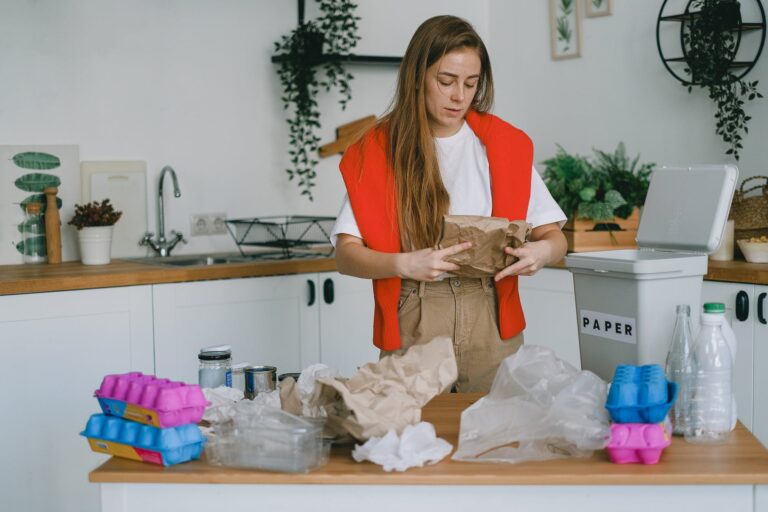
How-To Section
How to Tie a Garbage Bag
Tying a garbage bag may sound like a simple task, but a secure knot prevents spills and odors. Follow these steps for a foolproof tie:
Gather the bag’s open edges.
Securely close the bag by twisting its top to form a firm seal.
Fold the twisted part over itself.
Tie a knot with the folded section, ensuring it’s snug.
How to Put a Garbage Bag in a Stainless Steel Can
Inserting a garbage bag into a stainless steel can requires a bit of finesse. Follow these steps for a smooth fit:
Open the stainless steel can.
Unfold the garbage bag and place it inside the can, ensuring the edges overlap the rim.
Fold any excess material over the edges for a neat appearance.
What to Do When a Garbage Bag is Nearly Full
When your garbage bag is nearing capacity, take the following steps to avoid spills and overflows:
Tie the bag securely to prevent leaks.
Gently press down on the contents to create more space.
Consider using a larger bag for heavier loads.
How Much is a Garbage Bag Full of Cans Worth
The value of a garbage bag full of cans can vary. Check with local recycling centers to determine the current rates for aluminum or other materials in your area.
How Many Cans Fit in a Garbage Bag
The number of cans that fit in a garbage bag depends on the bag’s size and the size of the cans. On average, a standard kitchen trash bag can hold around 30 to 40 standard-sized aluminum cans.
What Size Garbage Bag Do I Need
Selecting the right size garbage bag is crucial for efficient waste management. Consider the volume of your household waste and choose a bag size that accommodates it comfortably. Standard kitchen trash bags typically range from 13 to 30 gallons.
How to Keep Garbage Bag in Place
To prevent your garbage bag from slipping or collapsing inside the bin, try these tips:
Opt for bags with drawstrings for a secure fit.
Use garbage bags specifically designed for your bin size.
Place a heavy item at the bottom of the bin to anchor the bag.
How to Tie a Garbage Bag Without Strings
If your garbage bag lacks strings, use the following alternative method:
Twist the bag’s top as usual.
Use a rubber band or reusable clip to secure the twisted portion.
Tie a knot over the secured area for added stability.
How Much Weight Can a Garbage Bag Hold
Garbage bags vary in strength, so it’s essential to check the packaging for weight limits. On average, standard kitchen trash bags can hold between 10 to 20 pounds.
What Is the Smallest Size Garbage Bag
The smallest size garbage bag typically ranges from 4 to 8 gallons, suitable for bathroom or office waste bins. Ensure you choose a size that fits your specific needs.
How to Put a Garbage Bag in a Bin
Inserting a garbage bag into a bin is a straightforward process:
Open the bin.
Unfold the garbage bag and place it inside, ensuring a snug fit.
Fold any excess material over the bin’s edges.
How to Keep a Garbage Bag From Slipping
Prevent your garbage bag from slipping with these tips:
Ensure the bag is the right size for the bin.
Double-check that the bag’s edges overlap the bin’s rim.
Place heavier items at the bottom of the bag for added stability.
FAQs
Q: What is a garbage bag called?
A: A garbage bag is commonly referred to as a trash bag, rubbish bag, or bin liner. It is a disposable bag used to contain and dispose of waste materials.
Q: What will replace garbage bags?
A: As of now, there is no universally accepted replacement for garbage bags. However, there are ongoing efforts to reduce single-use plastic waste, and alternatives like compostable bags, reusable containers, and waste reduction practices are being explored to minimize the environmental impact of traditional garbage bags.

Q: Which brand of garbage bag is the strongest?
A: The strength of garbage bags can vary among brands, and different brands may offer various features such as thickness, durability, and puncture resistance. Some well-known brands of strong garbage bags include Glad, Hefty, and Simplehuman. However, it’s recommended to check product reviews and specifications to find the best fit for specific needs.
Q: What is a black garbage bag?
A: A black garbage bag is a type of trash bag that is typically colored black. It serves the same purpose as any other garbage bag, providing a container for waste materials. The black color is often chosen for aesthetic reasons or to conceal the contents of the bag, especially in situations where the visibility of the waste is a concern.
Conclusion
In conclusion, garbage bags have come a long way, thanks to technological advancements and sustainable practices. Innovations such as smart garbage bags have revolutionized waste management, providing us with user-friendly features and improved efficiency. By considering customer reviews, case studies, and industry standards, we can make well-informed choices when selecting the right brand of garbage bags. Additionally, following best practices, avoiding common mistakes, and embracing sustainability will enable us to optimize waste management while prioritizing safety and environmental responsibility.
Remember, the choices we make in terms of garbage bag usage may seem small on an individual level, but they collectively contribute to a greener and more sustainable future. By selecting environmentally friendly brands, using our garbage bags efficiently, and promoting responsible waste disposal practices, we can all make a significant impact. So let’s take proactive steps to reduce our ecological footprint, embrace innovative technology, and make informed decisions when it comes to garbage bags. Together, we can create a cleaner and healthier world for future generations.
Thanks for investing your time in reading this article. We would love to hear your feedback and personal experiences with garbage bags. Feel free to share your thoughts and join the conversation on our social media platforms. Let’s keep the trash talk going and continue to explore ways to make a difference!
As an Amazon Associate, I earn from qualifying purchases.






